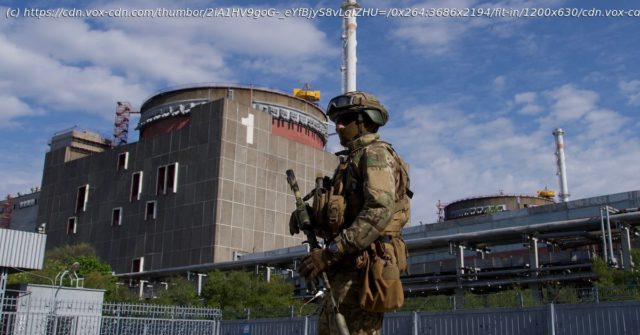Europe’s biggest nuclear power plant is also its most vulnerable.
Russian and Ukrainian forces are locked in a standoff at the Zaporizhzhia nuclear power plant, raising fears across Europe and the specter of Chernobyl. Shelling near the strategically located plant — which both sides have blamed on the other — has increased the risk of a serious accident, and families are fleeing the area in the face of a possible nuclear catastrophe.
Zaporizhzhia is Europe’s largest nuclear power plant, and it provides electricity to Ukraine and to several European countries. Its location on the Dnipro River makes it a critical target for Russian forces, which have controlled the plant since March. Despite Russian forces allegedly turning the plant into a military installation, Ukrainian operators still manage the safety and daily operations of the plant, under significant duress.
Multiple parties, including UN Secretary General Antonio Guterres, have called for the immediate demilitarization of the plant, citing the potential for a serious and widespread nuclear disaster. However, Ivan Nechayev, deputy director of the Russian foreign ministry’s information and press department, claimed that such a de-escalation “will make the plant even more vulnerable.” Russian officials also claimed in a letter to the UN that Ukraine was planning a “provocation” there Friday, according to the TASS state-run news agency — a claim Ukraine countered, saying Russia planned to disconnect the plant from the Ukrainian grid and connect it to Russia’s power grid, Reuters reported. Thus far, neither incident has come to pass.
The global concern about Zaporizhzhia’s security isn’t surprising, especially with the 1986 Chernobyl nuclear disaster still a presence. Furthermore, that concern isn’t unfounded; there are real possibilities for problems at the plant, ranging from alarming to cataclysmic. The biggest risk to Zaporizhzhia is a power outage
While there are many things that could go wrong at Zaporizhzhia, “The likelihood of an intentional attack on the [plant] that leads to a major nuclear disaster is low,” Ivanka Barzashka, founder and co-director of the King’s Wargaming Network at King’s College London, told Vox via email. “Moscow would have a lot to lose and nothing to gain from such an outcome, given the reactor’s proximity to Russian forces and population.” Furthermore, the plant is built to withstand direct attacks, as it’s constructed with reinforced concrete.
The real risks to the facility are more likely to be due to human error, accidental shelling, or a lack of electricity to cool the nuclear material, according to Matthew Bunn, the James R. Schlesinger professor of the practice of energy, national security, and foreign policy at Harvard’s Kennedy School of Government.
“The biggest concern is [the] cooling of a nuclear power plant,” Bunn said. “In general, to avoid an accident at a nuclear power plant, you need to keep the reactor core under water, and the spent fuel and the spent fuel pool under water so they’re continuously cooled.” That cooling process requires electricity, which now comes from Ukraine’s external power grid. The Fukushima nuclear plant disaster in Japan, for example, occurred because of a tsunami which cut off-site electricity to the plant and destroyed the generators, making it impossible to cool the facility even though the reactor had undergone emergency shutdown.
However, as Bunn told Vox, a number of those lines have already been cut, increasing the possibility that Zaporizhzhia might have to rely on diesel-powered generators to support the cooling process. It’s unclear how much fuel those generators have, given that Russian forces have reportedly been siphoning off the fuel for their own purposes, Bunn said. “Diesel’s a highly sought commodity in any war zone,” he said. “There are supposed to be days of diesel at the site; we don’t know whether that’s still true or not.” The Ukrainian nuclear agency Energoatom said on Friday that Russian forces were seeking diesel to fuel the generators in the case of power loss, according to Reuters.
In a worst-case scenario, the plant could lose power and the pumps circulating water to cool the reactor core and spent fuel pool would shut down. The heat that the reactor core and the spent material generate would then boil the surrounding water until it evaporates, exposing the reactor core “within hours,” Bunn said.






